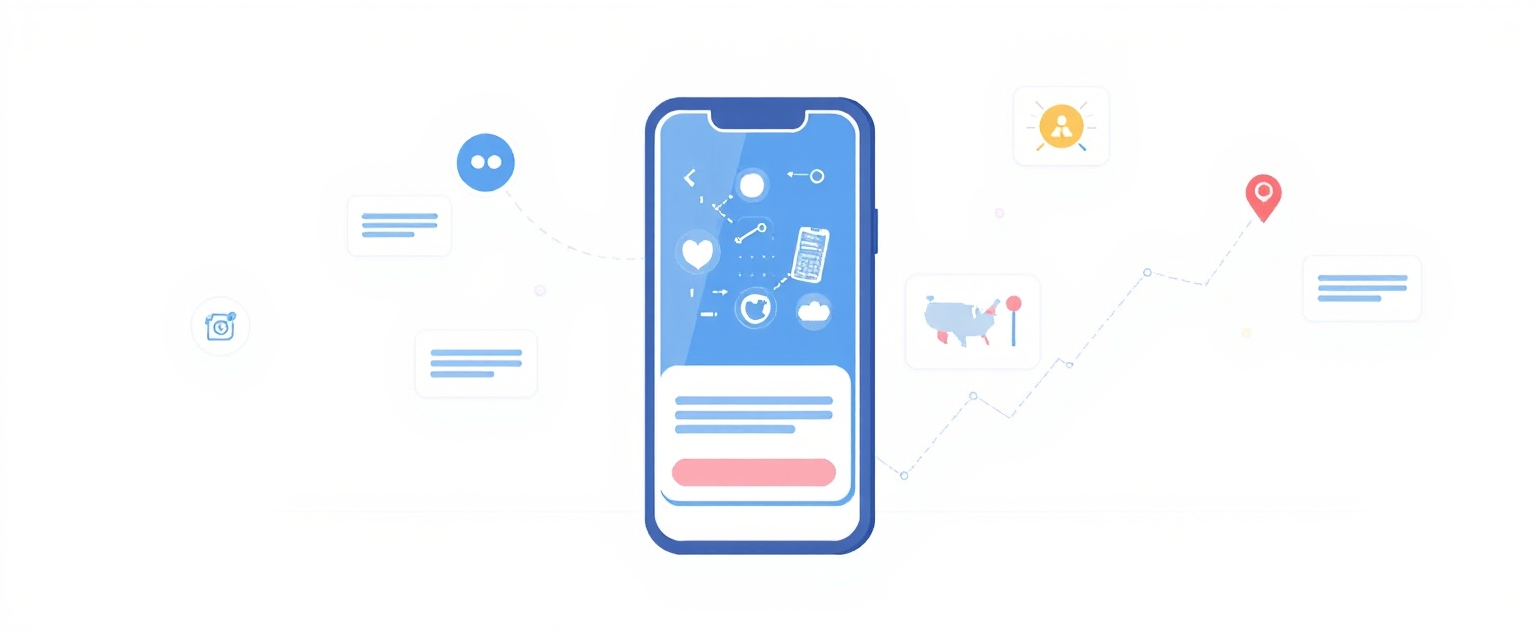Trends and Innovations in Push Notifications in 2024
14.11.2024

Imagine: you’re scrolling through your feed, your phone’s battery is low, and a new alert pops up. Will you read it or ignore it? Now, let’s flip the perspective. How can you create a message that not only catches attention but also prompts action? Which technologies and approaches can help achieve this goal in the year ahead?
1. Smart Personalization: More Than Just a Name
Personalization has long been the norm. We’re called by name, and products are suggested based on browsing history, but users are getting more discerning. The trend is moving toward hyper-personalization: showing users what they need even before they realize it. Here, artificial intelligence (AI) takes the lead.
Imagine a platform analyzing user behavior across resources and instantly tailoring content to their current interests. This isn’t just “a new collection in your favorite store” but something more intricate—like a message that predicts when a user might want to read an article or try a service at a specific moment. Sounds futuristic? Not anymore; this technology is set to grow.
2. Perfect Timing: Hitting the Right Moment
Messages need to arrive at the right time, but what does that mean? The trend will shift to technologies that can “sense” the best timing, moving away from rigid schedules like “Monday morning” or “Friday evening.” Instead, systems will adapt to the user’s own rhythm.
New algorithms will be able to predict when users are most receptive to information. For example, Friday evening may not work for everyone, and a Monday morning ad for gym discounts may not appeal. Ideally, these systems will detect moments when a user has a few free minutes or has just completed a major task.
3. Interactive Messaging: Engage, Don’t Distract
Gone are the days of static messages. This is the age of interactive alerts. Imagine receiving a mini-survey, quiz, or multiple action options within the notification itself. Need to buy something? The alert might offer three products to choose from right in the message.
These alerts allow users to act without following links, making the experience convenient and time-efficient. For example, a fitness app might send a message asking, “What’s your energy level today? High, medium, or low?” and immediately suggest a workout matching the user’s mood.
4. Integration with Voice Assistants and Smart Devices
You’re at home, turning on your smart kettle, and suddenly get an alert from your favorite store: “Warm blankets on sale! Why not take a look?” Sound unusual? Large platforms are already testing these scenarios.
With increasing integration into the Internet of Things (IoT), these messages are becoming part of a larger device ecosystem. Platforms interact with voice assistants to deliver audio notifications through smart speakers or on demand. We can expect more devices to send messages directly, with users choosing how they prefer to receive them—reading or listening.
5. Emotional Intelligence in Alerts
Now let’s talk psychology. Imagine a message that not only talks to you but also senses your mood. It sounds like science fiction, but technologies that analyze emotional states and tailor messages accordingly are on the rise.
Using behavior data (recent activity, response frequency, and preferred times), alerts can adapt. Picture a message following a tough day: instead of “50% off sneakers!” it might say, “We know sometimes you need a little extra comfort. Check out our cozy collection.” This creates a more human, appealing interaction.
6. Eco-Friendly Messaging: Meaningful Alerts
This year, users expect responsibility from brands. Alerts aren’t just an advertising tool anymore; they’re also a way to convey important messages. Brands are starting to use them to promote sustainable practices and social causes.
For instance, platforms might inform users that a portion of their purchase supports charity or remind them to use resources responsibly. These notifications are becoming more than just a marketing channel; they’re becoming a platform for meaningful interaction, reflecting users’ values.
Conclusion
The notifications we see now will look very different from what we’re used to. They’re evolving beyond short messages that can distract or annoy; they’re becoming a form of intelligent interaction that anticipates needs, adapts to moods, and fosters engagement.
As we enter a new era, these messages will be less intrusive and more inviting, useful, and timely, aligning with personal rhythms and preferences. This is set to be the year when notifications finally fulfill their true potential: becoming a helpful assistant rather than just another advertising channel.


